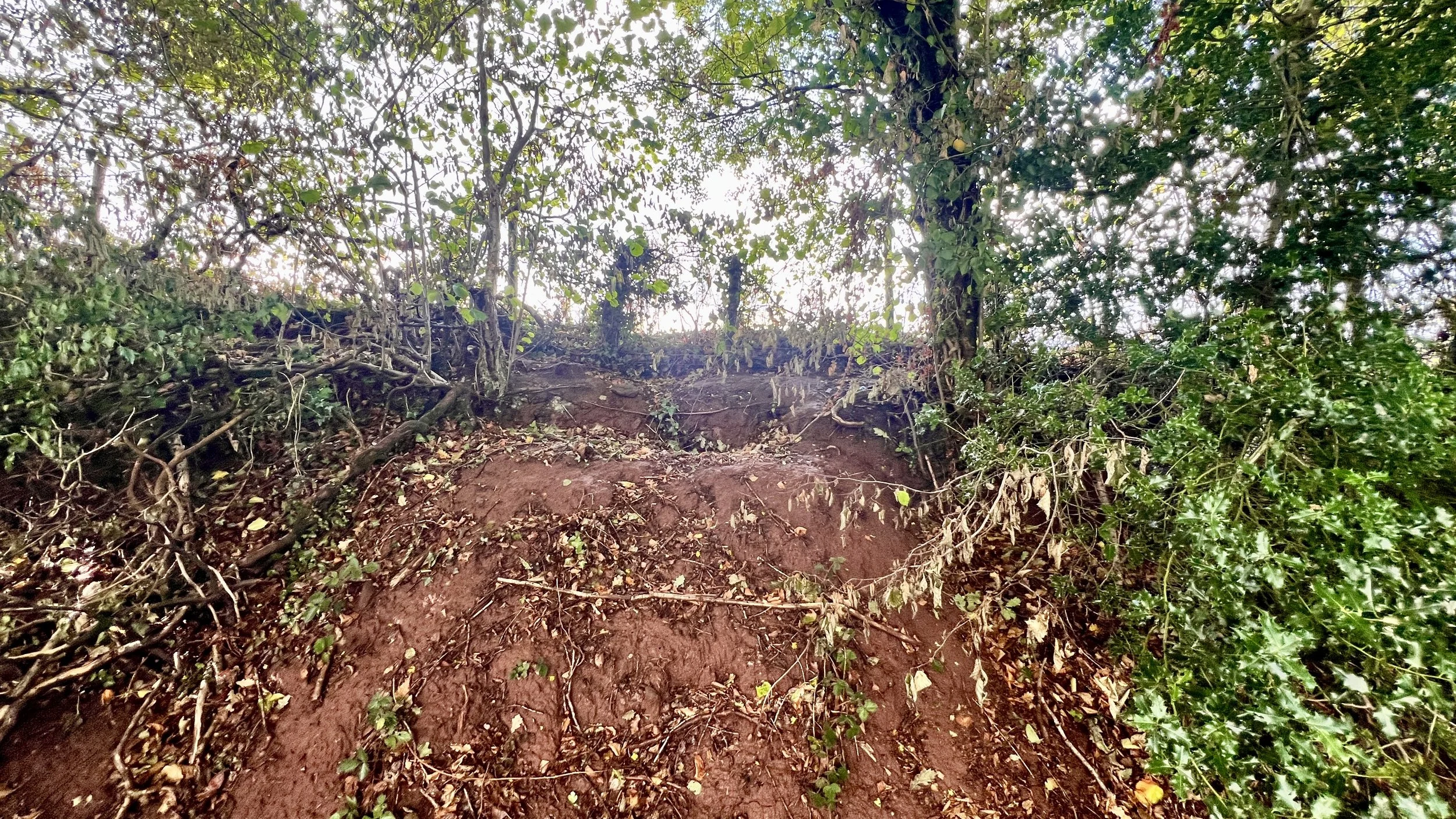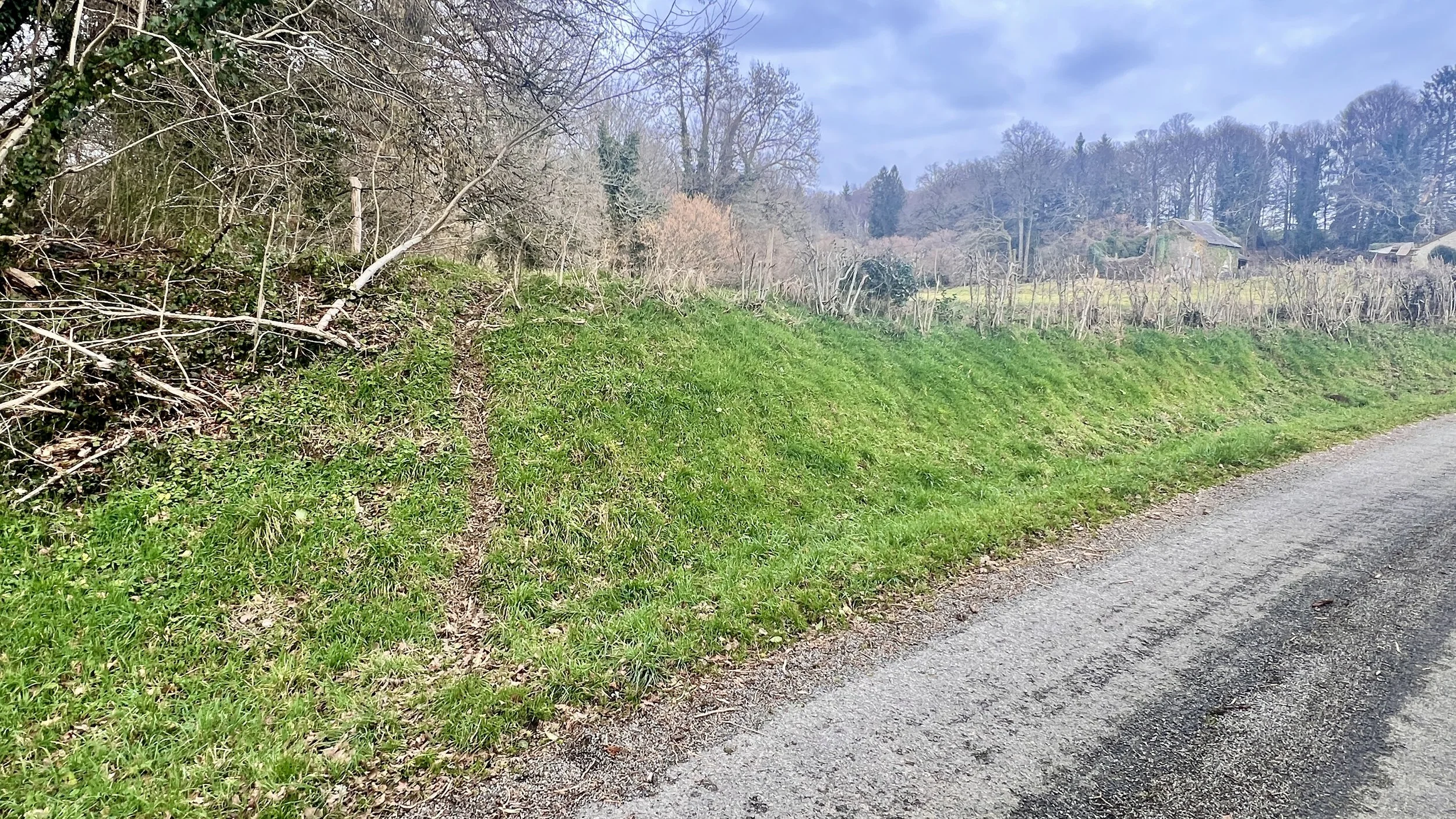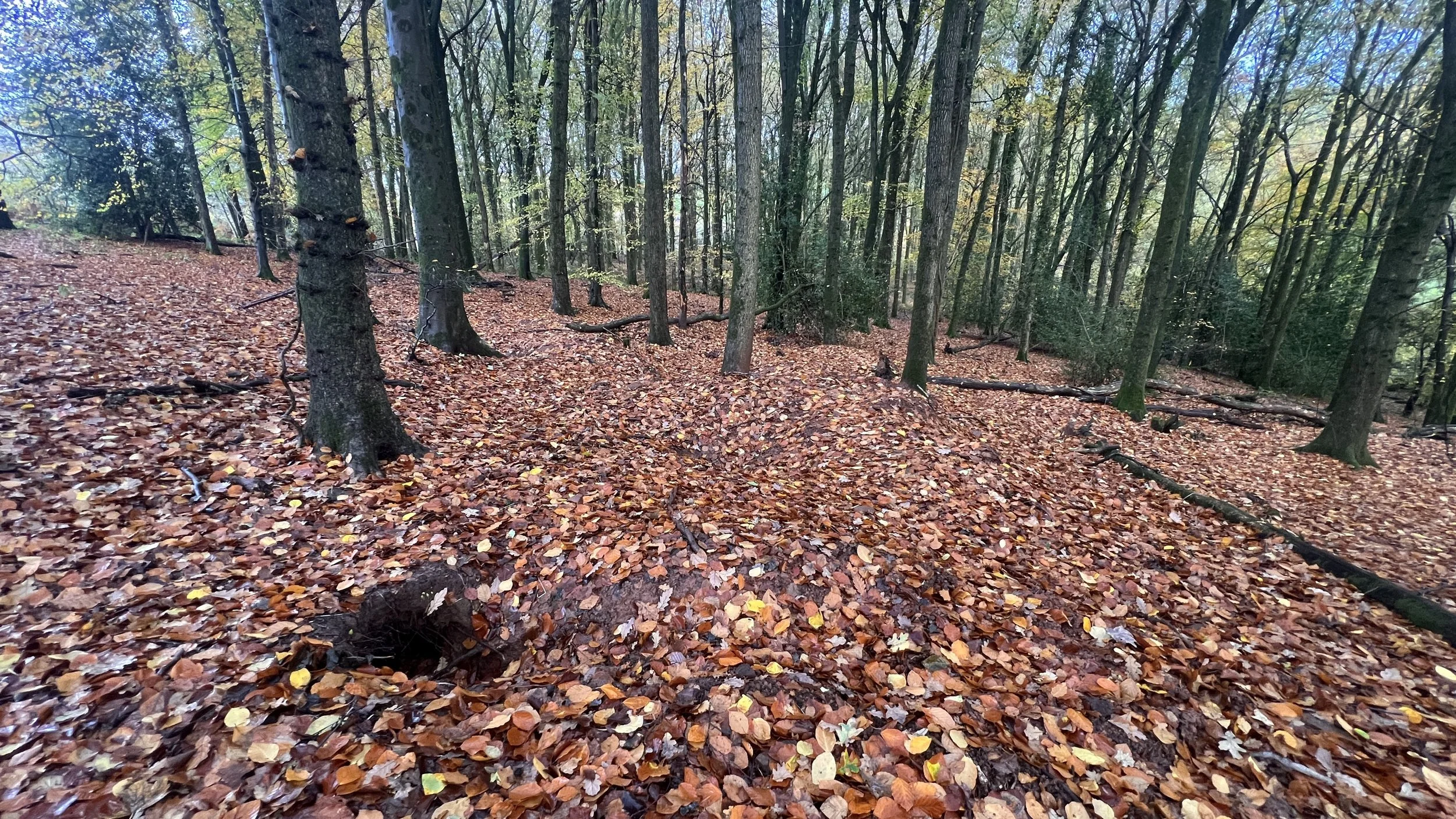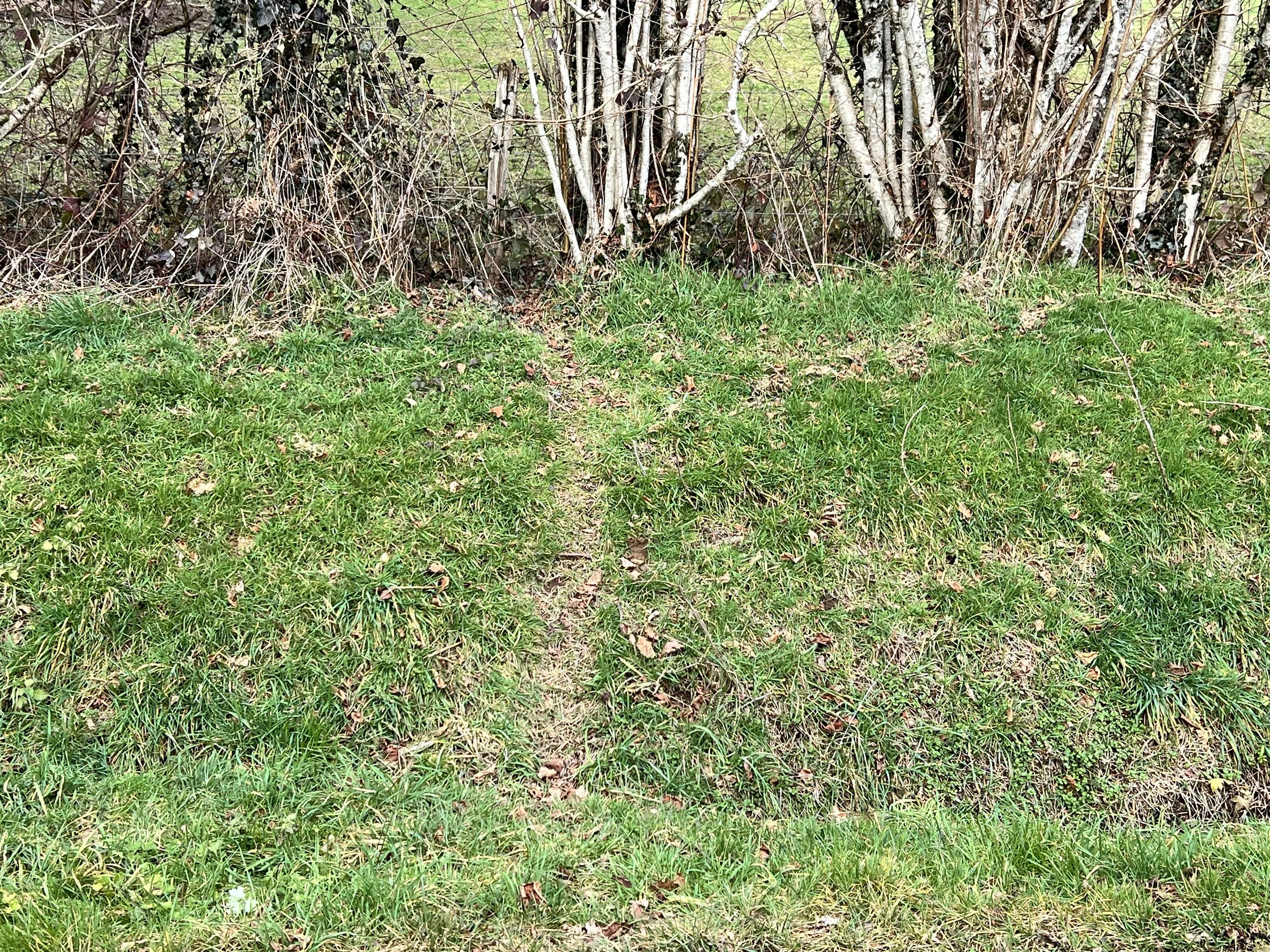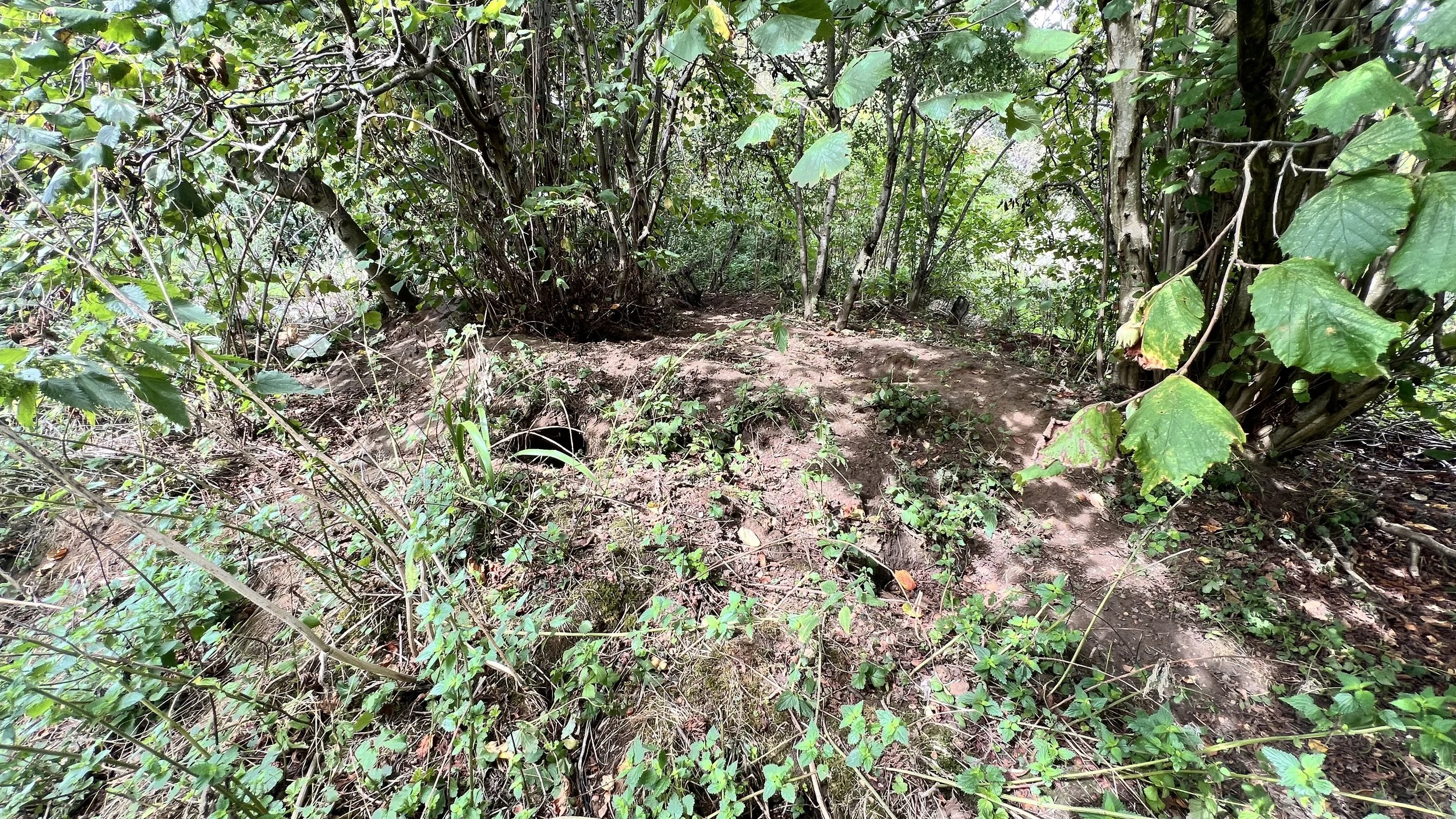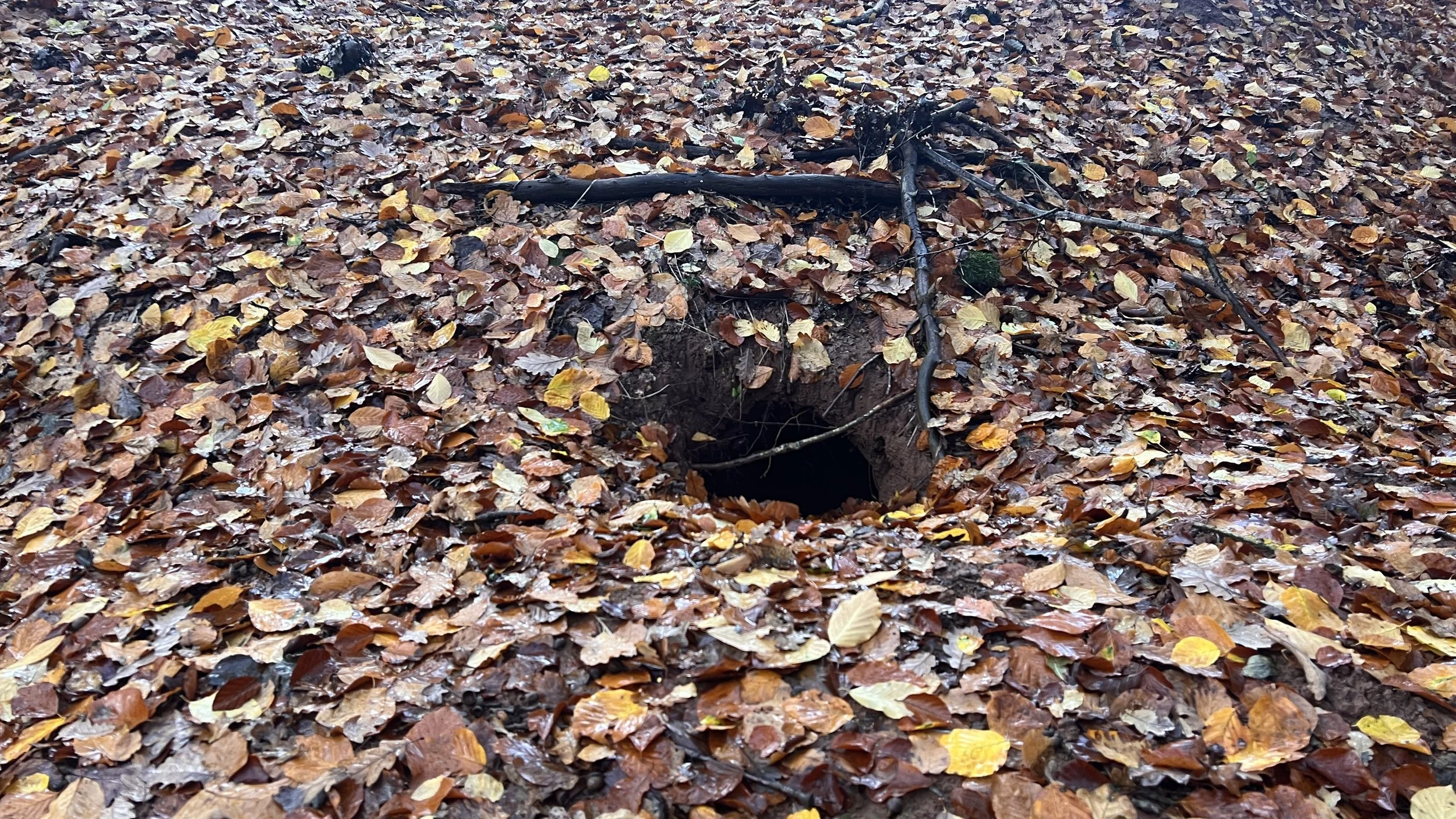Fieldcraft Friday: Understanding Badger Setts – The Architecture of Clan Life
Few British mammals shape the land as quietly and persistently as the badger. Beneath our woodlands and hedge banks lies a hidden world of tunnels, sleeping chambers, and storerooms that have evolved over generations. For naturalists and wildlife photographers, learning to read these setts is more than a skill…..it’s a way of glimpsing how badgers live, think, and even engineer the ground beneath our feet.
Main, Annex and Outlier Setts – Three Sides of a Complex Society
Each badger clan, a close social group of usually four to seven adults, centres its life around a main sett; a permanent structure used throughout the year. This is the clan’s nucleus, the place where cubs are born, where individuals rest through winter, and where much of their social interaction and grooming takes place.
A main sett can have 8 to 40 or more entrances and an intricate network of tunnels extending for hundreds of metres, containing multiple sleeping and nursery chambers across several levels. Entrances are wide and oval, with broad, smooth paths radiating through the woodland. Around them lie spoil heaps of pale soil, the product of centuries of digging.
But the badger’s world doesn’t end here. Scattered across the territory are annex and outlier setts, smaller tunnel systems that act as the clan’s flexible satellites, offering safety, convenience, and space. Each plays a subtle but essential role in how the group lives within its environment.
Annex Setts – The Often Overlooked Middle Ground
Annex setts sit in an interesting position between the main sett and the more distant outliers. They are not the clan’s core home, but neither are they occasional refuges. Think of an annex as a semi-permanent extension of the main system, used regularly enough to be part of the clan’s daily life, but not so intensively that it becomes the heart of the territory.
Outlier Setts – The Clan’s Adaptable Outposts
Outlier setts are what make badger life so remarkably resilient. A typical clan has two to six of these scattered through its range, though in long-settled areas there can be ten or more. Each has just a handful of entrances and a few short tunnels, often reused rabbit warrens or holes dug into field banks and copses.
They’re not used every day, and that’s the point. Outliers provide flexibility, allowing the clan to adapt to changing conditions, from weather to social tension to food availability.
How Many Setts and Over What Area
Each clan maintains one main sett and several outliers, occasionally with an annex sett nearby (a smaller, regularly used satellite within about 100 metres).
In food-rich lowlands, territories often cover 20 to 50 hectares, while in poorer uplands they may stretch over 100 to 150 hectares. Outlier setts are typically within 500 to 700 metres of the main sett, and tend to have less well defined paths to and from them, than you would find around the main sett.
How to Tell a Main Sett from an Annex or an Outlier
At first glance, one badger hole looks much like another. But with time and observation, the differences between a main sett, an annex, and an outlier become clear. Recognising these distinctions helps you understand how a clan uses its territory — and ensures you don’t misinterpret a quiet corner of ground as a clan’s heart, or vice versa.
Main Sett – The Heart of the Clan
A main sett is the social and spatial core of the badger’s territory. It shows continuous year-round activity:
Numerous entrances (typically 8 to 40 or more).
Broad, smooth paths connecting to multiple feeding areas.
Large, fresh spoil heaps with pale dry soil.
Bedding dragged out to air, often daily in spring and summer.
A musky scent, clear signs of grooming, and nearby latrines.
You’ll often find clear signs of regular commuting routes radiating outwards — almost like the spokes of a wheel. A main sett is usually on well-drained ground, often a woodland slope or bank with cover and dry soil.
If you stand quietly nearby, the density of tracks, paths, and latrines tells you everything: this is the clan’s living room.
The main sett is the hub of a badger clan’s life: a long-established centre around which life revolves. It’s where most clan members will sleep, shelter, raise their cubs and return to after each night’s foraging. It’s the secure heart of the territory, linking every part of the clan’s daily routine.
Typical Features of an Annex Sett
An annex sett sits close to the main sett, often within 50 to 150 metres, and looks like a smaller satellite to the main complex. It’s usually linked by worn paths and shows regular use, often seasonally or when cubs are large.
Two to ten entrances, usually smaller than the main sett’s.
Moderate spoil heaps — often fresh, but not constantly replenished like a main sett.
Intermittent bedding — out and in again, especially in spring and early summer.
Clear, well-used paths connecting it directly to the main sett.
Occasional play areas for cubs, especially in May and June, as they begin exploring.
Less scent but more activity than outliers, making them feel “lived in” but not crowded.
Think of an annex as a “guest wing”, part of the same property, but not always occupied. Over time, annexes can evolve into independent outliers if paths fade and direct use wanes.
Annex Sett - Patterns & Frequency of Use
Annex setts serve several subtle but important functions:
Space management during crowded seasons
In spring, when cubs are mobile and the main sett is busy, annexes act as overflow bedrooms. Yearlings and subordinate adults often shift into annex chambers to free space in the deeper, warmer parts of the main sett.
Safe training grounds for cubs
Annexes frequently host the first exploratory play sessions outside the main sett. They give cubs a safe halfway point between the secure core and the wider world.
Temperature and humidity diversity
Annexes often occupy slightly different soil or slope conditions — allowing clan members to fine-tune their sleeping environment. They are often drier or more exposed than the main sett, providing alternative microclimates without needing to move far.
Staying close to the main social hub
Annex users remain part of the daily social fabric. They may sleep away from the main sett but often return for grooming, scent communication, or feeding their cubs.
Stability during disruption
If the main sett becomes briefly unsuitable — a fallen tree, localised flooding, or disturbance — annexes offer immediate backup while remaining close to familiar territory.
Outlier Sett – The Clan’s Flexible Satellite
An outlier sett is typically smaller, simpler, and more isolated. It might have one to four entrances and little or no fresh spoil or bedding most of the year.
The key clues are its position and frequency of use:
Outliers are often hundreds of metres from the main sett (commonly within 500–700 m).
They tend to lie near food-rich fields, boundary latrines, or dry slopes.
Paths leading to them are fainter and sometimes overgrown.
They come alive in summer or after heavy rain, then fall silent again. The presence of old bedding, faint soil mounds, or an occasional hair on a bramble root shows that while the clan hasn’t forgotten this site, it’s not home, it’s a handy refuge.
Outlier Sett - Patterns & Frequency of Use
Strategic Resting Places
In summer and autumn, when badgers travel long distances to feed on worms, cereals, or maize, it makes little sense to return to the main sett each night. Outliers near these feeding areas become temporary overnight dens. They save energy and keep badgers close to the richest foraging zones, almost like small field lodges spread through the territory.
Seasonal Shifts and Weather Refuge
Main setts can flood in winter or overheat in summer. Outliers provide alternatives — cooler, drier ground when needed, or warmer, more sheltered sites in cold snaps. Long-term studies show that some outliers are chosen precisely because their soil temperature and humidity differ subtly from the main sett’s, proving that badgers don’t just dig where it’s easy — they dig where the microclimate suits their needs.
Deep chambers in the main sett can stay 2–3°C warmer than surrounding soil in winter, while shaded outliers remain cooler in summer. This kind of microclimatic rotation — a natural, instinctive “air-conditioning system” — shows how finely tuned these animals are to their environment.
Parasite and Hygiene Management
Badgers are clean by nature. They drag out bedding to dry, defecate in latrines outside, and shift sleeping sites to break parasite cycles. Outliers act as rest points in this routine — places to let the main sett dry out while the clan sleeps elsewhere. Some are clearly used in rotation, with the same site revisited at predictable intervals.
Social Breathing Space
Badger society runs on quiet hierarchies. The dominant sow and boar occupy the deepest, safest chambers, while subordinates and younger adults often sleep in peripheral tunnels or move out to nearby outliers. Each individual develops sett fidelity — a preference for certain entrances or chambers that they return to repeatedly.
To a fieldworker watching closely, the main sett is less a single home and more a collection of small, familiar apartments within one communal structure. It’s ordered, habitual, and far more personal than most people imagine.
Breeding and Cub Rearing
Most cubs are born underground between late January and March, but not all in the same place. Subordinate females sometimes rear their litters in quiet outlier chambers, especially when the main sett is crowded. These “nursery outliers” burst briefly into life — fresh spoil, clean bedding, worn paths — and then fall silent again once the family rejoins the main group.
Territorial Markers and Border Posts
Outliers near the edge of a clan’s range also serve as watch posts. By sleeping and scent-marking near boundaries, badgers reinforce ownership and reduce direct conflict with neighbours. Mapping studies consistently show outliers clustering close to territorial latrines, the clan’s invisible fence line.
Outlier use is fluid. Some are occupied for days, others for weeks or seasons, and many are left untouched for years before being reopened.
Fresh spoil and bedding indicate recent occupation; mossy heaps and collapsed entrances point to long dormancy. The most active outliers tend to lie along regular foraging routes or near food-rich patches, while the most distant ones are positioned like sentinels at the territory’s borders.
Across a woodland, this pattern creates a sett network — a living system of dens that reflects the clan’s social rhythm, food resources, and even the character of the soil itself.
How annex setts differ from outliers
The key difference is proximity and regularity. Outliers can be hundreds of metres away and may not be touched for months. Annexes, by contrast, feel like part of the main complex:
They show regular short-term use throughout the year.
They are almost always part of the same network of daily pathways.
Their activity levels rise and fall with seasonal pressures, not long-term shifts.
An annex is a place the clan knows intimately, uses often, and keeps in good repair, a sort of one-room outbuilding attached to the main sett by a well-worn track.
Annex setts sit close to the main sett and are usually connected by clear, well-worn paths, reflecting their regular use as part of the clan’s core living space. Outlier setts lie much farther across the territory, often near feeding areas or boundary zones, and are less likely to have well defined paths associated with them. In the example above, the clan are using the hedgerows as natural corridors to the feeding grounds and outlier setts.
Why the Difference Matters
Understanding Clan Structure and Movement
Mapping the main, annex, and outlier setts reveals how a clan uses its territory — where it feeds, breeds, and rests. Knowing this helps naturalists predict activity without intrusive monitoring. For example, finding fresh digging at an outlier in June might indicate a temporary shift during hot weather, not a relocation of the entire clan.
Ethical Photography and Observation
Recognising sett type determines how close you can safely work. Watching from the edge of a foraging route or near an outlier is usually lower risk; approaching a main sett in spring could cause disturbance at a breeding site. Understanding these roles lets you photograph responsibly and with confidence.
Conservation and Legal Protection
Under UK law, all setts are protected if they show current use. However, accurate identification of sett type is essential for land management, survey reporting, or conservation work. Mistaking a quiet outlier for an inactive site can lead to unintentional damage; misjudging a main sett can cause a serious offence.
Ecological Insight
The balance between main, annex, and outlier setts tells a story about local habitat quality. Rich, well-connected territories tend to have more satellites — a sign of stable, healthy badger populations. Sparse, isolated setts can signal habitat loss, soil compaction, or human disturbance.
The Long View – Setts as Living Landscapes
To the untrained eye, a badger sett might look temporary. In truth, many main setts are ancient. Soil profiles taken from long-occupied sites show layers of spoil, bedding fibres, and organic material built up over centuries. Some have been in continuous use for 300 to 500 years, making them among the oldest active mammal dwellings in Britain.
This relentless digging and bedding turnover doesn’t just alter the soil — it enriches it. Around many main setts, ecologists find higher earthworm densities and more diverse ground flora. Over time, badgers become quiet landscape engineers, reshaping slopes, aerating soil, and creating ecological hotspots that persist long after a clan has moved on.
Walk past an ancient sett in spring and you might notice the vegetation subtly different — greener, more vigorous — a living echo of hundreds of years of badger activity below. It’s a reminder that these animals don’t just inhabit landscapes; they create them.
Similarities Worth Noticing
Main, annex and outlier setts share clear hallmarks:
Entrances are oval and wider than tall, around 30 cm across.
Spoil heaps are fine and dry, often pale and sandy.
Paths are broad, smooth, and leaf-free from nightly use.
Badger hair caught on roots or brambles shows distinctive black-and-white banding.
The difference lies in intensity. A main sett is alive with scent and activity, annexes are somewhat quieter and always connected by paths back to the main sett, outliers are very much distant outposts — sometimes long-abandoned, sometimes newly claimed. Together they form the map of a clan’s life, as detailed as any fingerprint.
Fieldcraft Tips for Naturalists and Photographers
Work with the wind. Always approach from downwind; scent is a badger’s first warning.
Keep your distance. Observe from 15–20 metres away and below the skyline.
Read signs, not just sightings. Look out for digging, bedding, latrines and path use. Recording these over several months or years can provide valuable insight into the clans lifecycle and behaviour.
Visit early morning. Fresh spoil and tracks are easiest to spot before dew dries.
Always photograph and watch ethically. Use long lenses (or sit at distance if watching), do not use flash, and protect the locations of main, annex and outlier setts, regardless if they are in use or not.
A Quiet Architecture Beneath the Woods
When you walk through a beech wood or along a tangled hedgerow, imagine the city beneath your fee, a living network of tunnels and chambers, warmed by bodies, marked by generations, reshaping the soil year by year. Each main sett is a stronghold of tradition; each outlier, a stepping stone of adaptation.
Badgers move through this world with purpose and intelligence, choosing slopes by temperature, chambers by comfort, and routes by scent. They leave behind not only spoor and spoil heaps, but a changed landscape which is a living record of centuries of persistence.
For the wildlife photographer, understanding this hidden architecture brings you closer to the animal’s world. You begin to see not just holes in the earth, but stories; layers of memory and adaptation written in soil and scent.Good fieldcraft begins with restraint. Watch the paths, not the holes. Let the land speak before you press the shutter.
Badger Related Blog Articles to Read Next:
Badger Ecology and Field Signs
Badger Diet, Foraging Ecology & Feeding Behaviour
Fieldcraft Friday: Who’s Poo is This?
——————————————
FAQ: Badger Setts – Main, Annex and Outlier
Q1. How can you tell if a badger sett is a main sett?
A main sett is the clan’s primary home and shows heavy, year-round activity. Look for many entrances, wide smooth paths, fresh spoil heaps, bedding pulled out to air, and nearby latrines. Main setts are usually on well-drained slopes in woodland or banks and act as the centre of the territory.
Q2. What is an annex sett and how is it different from an outlier?
An annex sett lies close to the main sett (often within 50–150 metres) and is linked by clearly worn paths. It may have several entrances and shows regular seasonal use, especially when cubs are active. Outlier setts are much farther away, smaller, used intermittently, and often found near feeding grounds or territory edges.
Q3. Why do badgers use outlier setts?
Outlier setts provide flexibility. Badgers use them to sleep near rich feeding areas, escape overcrowding, avoid wet or flooded chambers, regulate temperature, manage parasites, and rest near boundary zones. They may be used for days or weeks at a time and then left inactive for long periods.
Q4. How far from the main sett can outlier setts be found?
Most outlier setts are located 400 to 700 metres from the main sett, sometimes farther in large territories. Because they are used less frequently, paths leading to them are often faint, seasonal or overgrown. Their location helps badgers cover their feeding range efficiently without returning to the main sett every night.
Q5. Are all badger setts protected by law in the UK?
Yes. Under the Protection of Badgers Act 1992, all setts showing signs of current use are legally protected. It is an offence to block, damage or disturb any active main, annex or outlier sett. This includes activities such as digging, heavy machinery use, tree felling, or working dogs near entrances.







